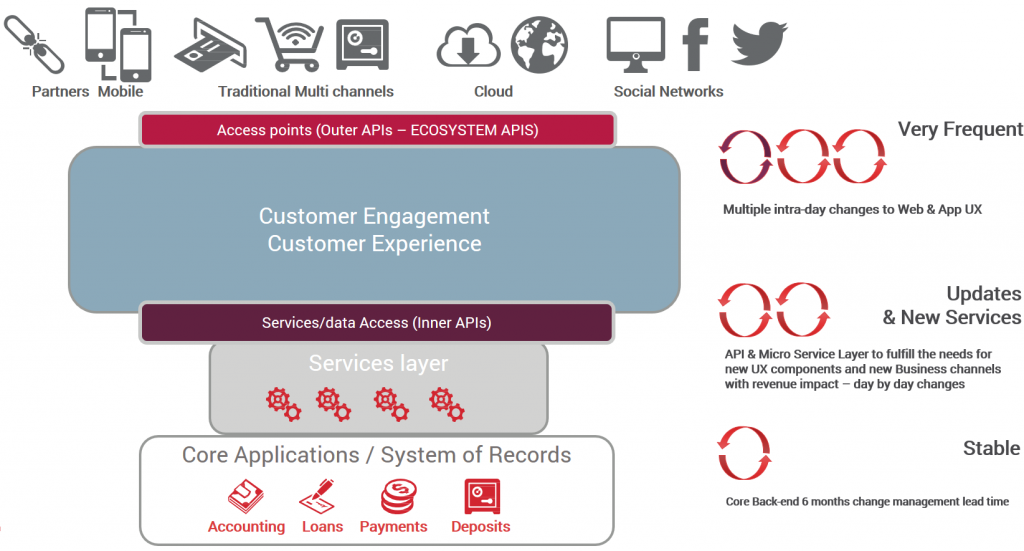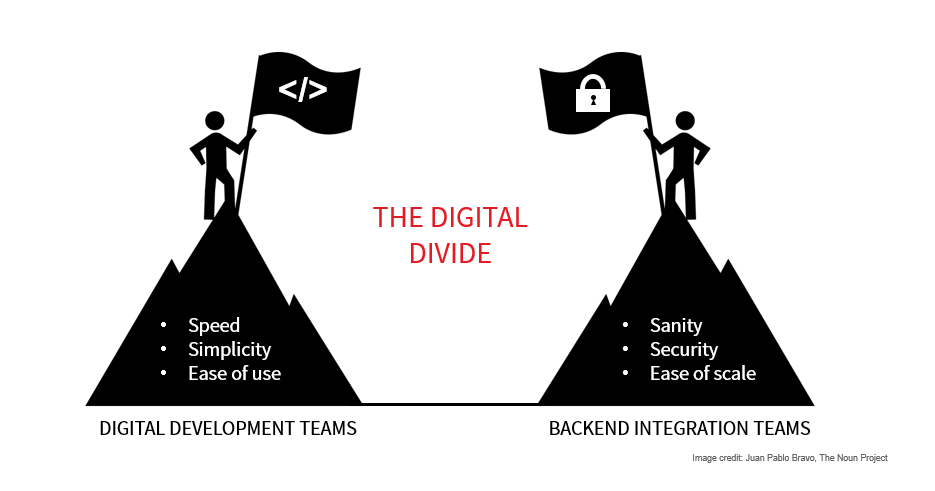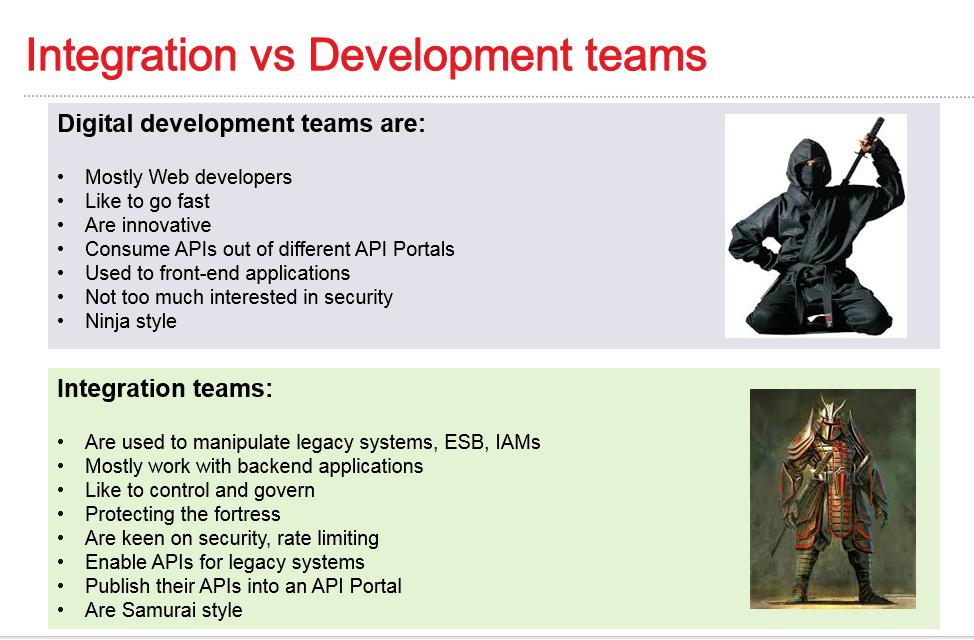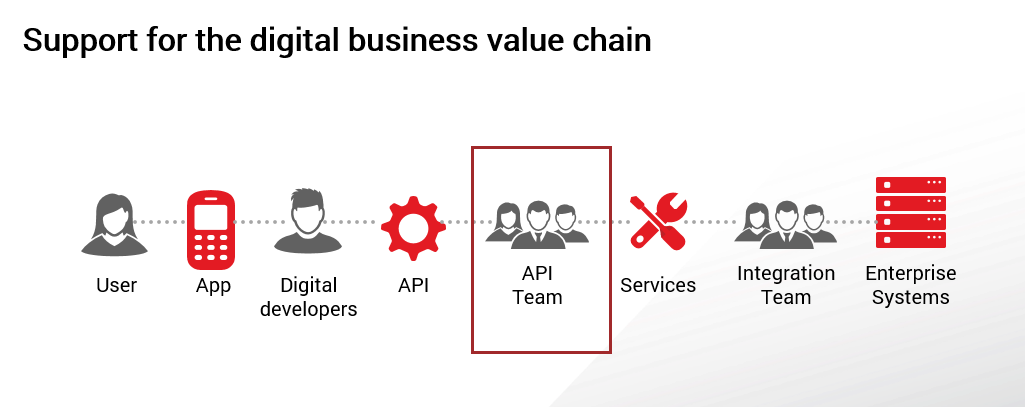We talked in a previous article about the different types of APIs. It’s important to note that all those API types result in different API change frequencies.
- On the edge, you have the systems of engagement – the digital apps and devices. They are built to change at a high frequency.
- Internally, you have the systems of record – the ones that have been created over the past decades. They are built to be very stable and change very slowly.

User experience APIs are likely to change quickly in order to respond to changing demand or new trends, whereas data APIs and service APIs are here to stay serving foundation needs like providing data not only about products, availability, and pricing but also other information around the business. API Orchestration comes in handy if you want to create Customer Experience APIs but consider layering the architecture into different “speeds” to respond to continuous and evolving changes in the requirements.
This is what we call the “Digital Divide” within organizations: on one hand, the digital development teams who are focused on speed, simplicity, and ease of use; on the other hand, the back-end integration teams that care about sanity, security, and ease of scale. An API team in the middle is meant to reconcile both teams and turn the legacy services into agile services. Another way of looking at the Digital Divide is to compare the digital development teams to Ninja warriors and the integration teams to Samurai soldiers, as shown in the table below.
Another way of looking at the Digital Divide is to compare the digital development teams to Ninja warriors and the integration teams to Samurai soldiers, as shown in the table below.
The API team makes sure everyone can leverage the expertise of the other while keeping their own DNA and methods. The API Team creates a set of APIs suited to the needs of digital developers. This means that the task is not just to surface existing services as configured but to combine them and surface them to simplify the task of development. This is critical no matter if developers are internal, or external.
Digital developers can then use these services to more easily build apps than ever before and along the way add value to the business when they are partners or developers anywhere. This is the benefit of external innovation.
Lastly, these apps serve users’ needs and help increase business interaction and value through any task they may address, be it customer service, sales, or delivering relevant and timely information.
All these constituencies and processes are critical to delivering value in an efficient and timely way. A subset may handle a specific project or two but that is limiting the ability to be prepared for the unknown future of continuous change that is at the heart of ‘becoming digital’.


